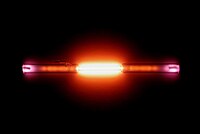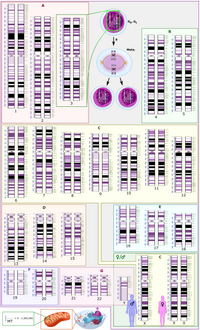
Method for the Identification of Potentially Bioactive Argon Binding Sites in Protein Families
Sign Up to like & getrecommendations! Published in 2022 at "Journal of chemical information and modeling"
DOI: 10.1021/acs.jcim.2c00071
Abstract: Argon belongs to the group of chemically inert noble gases, which display a remarkable spectrum of clinically useful biological properties. In an attempt to better understand noble gases, notably argon's mechanism of action, we mined… read more here.
Keywords: gas; noble gas; gas binding; protein families ... See more keywords

Privileged Structures and Polypharmacology within and between Protein Families
Sign Up to like & getrecommendations! Published in 2018 at "ACS Medicinal Chemistry Letters"
DOI: 10.1021/acsmedchemlett.8b00364
Abstract: Polypharmacology is often a key contributor to the efficacy of a drug, but is also a potential risk. We investigated two hits discovered via a cell-based phenotypic screen, the CDK9 inhibitor CCT250006 (1) and the… read more here.
Keywords: protein families; privileged structures; polypharmacology; polypharmacology within ... See more keywords

Multiple profile models extract features from protein sequence data and resolve functional diversity of very different protein families.
Sign Up to like & getrecommendations! Published in 2022 at "Molecular biology and evolution"
DOI: 10.1093/molbev/msac070
Abstract: Functional classification of proteins from sequences alone has become a critical bottleneck in understanding the myriad of protein sequences that accumulate in our databases. The great diversity of homologous sequences hides, in many cases, a… read more here.
Keywords: functional diversity; profile models; protein families; multiple profile ... See more keywords

Pfam: The protein families database in 2021
Sign Up to like & getrecommendations! Published in 2021 at "Nucleic Acids Research"
DOI: 10.1093/nar/gkaa913
Abstract: Abstract The Pfam database is a widely used resource for classifying protein sequences into families and domains. Since Pfam was last described in this journal, over 350 new families have been added in Pfam 33.1… read more here.
Keywords: protein; protein families; families database; pfam ... See more keywords

Dali server: structural unification of protein families
Sign Up to like & getrecommendations! Published in 2022 at "Nucleic Acids Research"
DOI: 10.1093/nar/gkac387
Abstract: Abstract Protein structure is key to understanding biological function. Structure comparison deciphers deep phylogenies, providing insight into functional conservation and functional shifts during evolution. Until recently, structural coverage of the protein universe was limited by… read more here.
Keywords: dali server; structure; server structural; structural unification ... See more keywords

Generative power of a protein language model trained on multiple sequence alignments
Sign Up to like & getrecommendations! Published in 2022 at "eLife"
DOI: 10.1101/2022.04.14.488405
Abstract: Computational models starting from large ensembles of evolutionarily related protein sequences capture a representation of protein families and learn constraints associated to protein structure and function. They thus open the possibility for generating novel sequences… read more here.
Keywords: trained multiple; sequence; protein language; protein families ... See more keywords

Skeletal development in the sea urchin relies upon protein families that contain intrinsic disorder, aggregation-prone, and conserved globular interactive domains
Sign Up to like & getrecommendations! Published in 2019 at "PLoS ONE"
DOI: 10.1371/journal.pone.0222068
Abstract: The formation of the sea urchin spicule skeleton requires the participation of hydrogel-forming protein families that regulate mineral nucleation and nanoparticle assembly processes that give rise to the spicule. However, the structure and molecular behavior… read more here.
Keywords: spicule; protein; protein families; spicule matrix ... See more keywords

Further Elucidation of the Argonaute and Dicer Protein Families in the Model Grass Species Brachypodium distachyon
Sign Up to like & getrecommendations! Published in 2019 at "Frontiers in Plant Science"
DOI: 10.3389/fpls.2019.01332
Abstract: RNA interference (RNAi) is a biological process in which small RNAs regulate gene silencing at the transcriptional or posttranscriptional level. The trigger for gene silencing is double-stranded RNA generated from an endogenous genomic locus or… read more here.
Keywords: protein families; grass; plant; brachypodium distachyon ... See more keywords

A Deeper Insight into the Tick Salivary Protein Families under the Light of Alphafold2 and Dali: Introducing the TickSialoFam 2.0 Database
Sign Up to like & getrecommendations! Published in 2022 at "International Journal of Molecular Sciences"
DOI: 10.3390/ijms232415613
Abstract: Hard ticks feed for several days or weeks on their hosts and their saliva contains thousands of polypeptides belonging to dozens of families, as identified by salivary transcriptomes. Comparison of the coding sequences to protein… read more here.
Keywords: tick salivary; alphafold2 dali; light alphafold2; protein families ... See more keywords